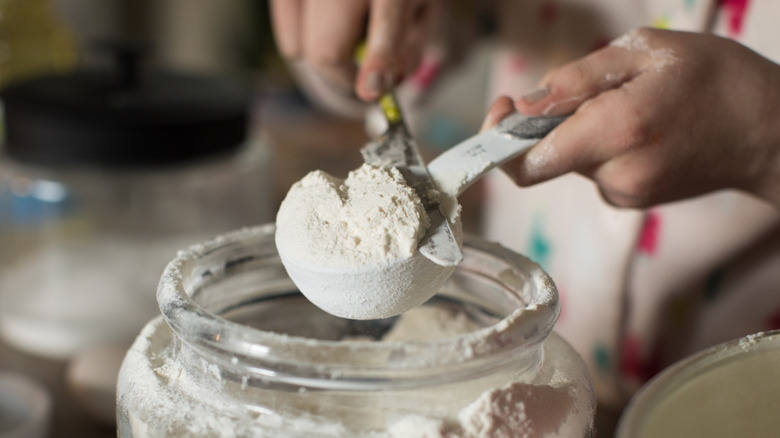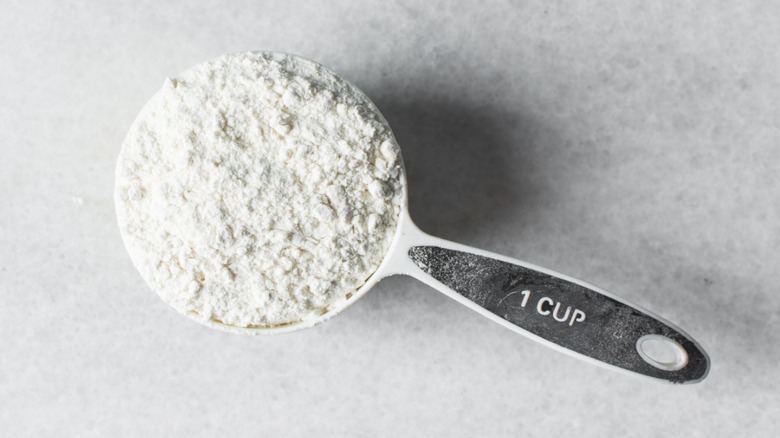Why You Should Use The Spoon-And-Level Method To Measure Flour
If we had to guess, we'd say that you're measuring flour incorrectly. Like many others, you're probably not a stranger to scooping the powdery ingredient directly from its container. A quick and easy way to measure the flour without making a mess, this technique might seem flawless. However, the truth is that measuring in this way has a major drawback — it yields incorrect quantities.
As flour sits, it can start to settle and clump together, causing it to become more densely compacted. When a measuring cup is then plunged directly into a bag or canister of said flour, too much of the ingredient is collected. For some perspective, King Arthur Baking states that while a tightly-packed cup can hold a whopping 160 grams of flour, a cup of sifted flour gathered via the spoon-and-level method can hold a mere 120 grams.
Since baking is closer to science than art, accuracy matters. Consequently, an excessive amount of flour is problematic because it negatively impacts the outcome of baked goods. Too much flour can weigh down cakes, cookies, and the like, ridding them of their intended airiness. Likewise, it can result in dry and crumbly textures, and it's even responsible for warping flavor. Needless to say, the spoon-and-level (also dubbed the fluff-sprinkle-and-scrape method) is a better way to measure and prevent disappointing baked goods.
How to properly measure flour
Dry ingredients like flour should always be measured following the scoop-and-level method. Despite that only a scale will provide you with the most precise measurements, mastering how to measure flour the correct way is the next best thing, ensuring you're always within the margin for error. That said, before you get to scooping and leveling, start with the right tools to ensure that everything goes off without a hitch. This means resisting the urge to use large multi-cup measuring containers better for liquids. Though they're likely properly indicated by their markings, measuring cups designed to have ingredients leveled off the top make for easier handling of dry ingredients. Also avoid using measuring cups that have cracks, chips, or other defects that could potentially skew measurements.
As for how to execute the scoop-and-level technique, begin by aerating the flour with a whisk. Then, gently scoop the flour into a measuring cup with a spoon, until the flour reaches over the rim of the cup. At this point, you can use the flat edge of a spoon handle to level off the cup. The result is a perfectly measured cup of flour, ideal for achieving the fluffiest cakes and cookies ever. Trust us, taste the results, and you'll never go back to measuring flour any other way!

